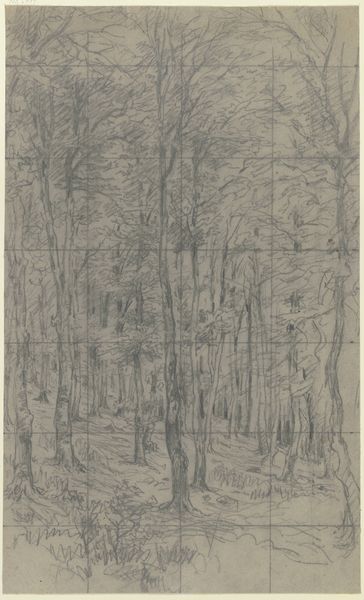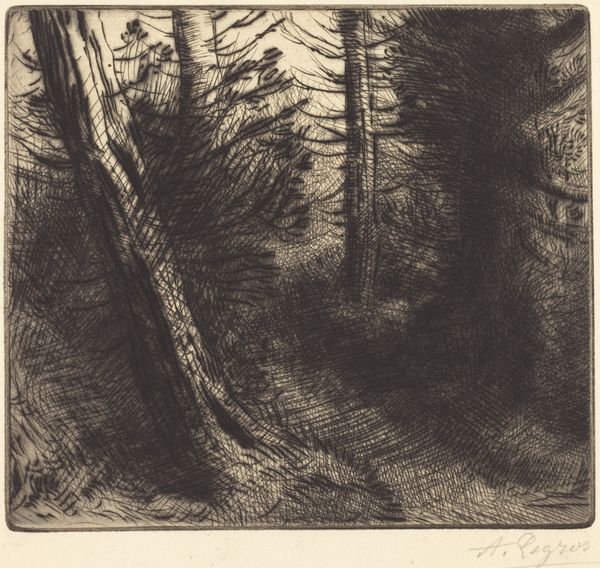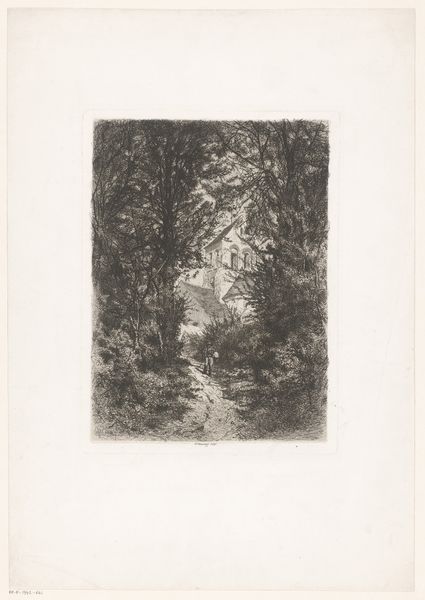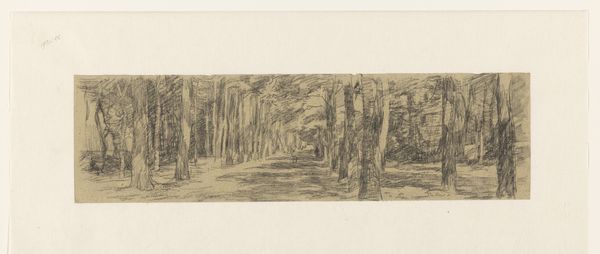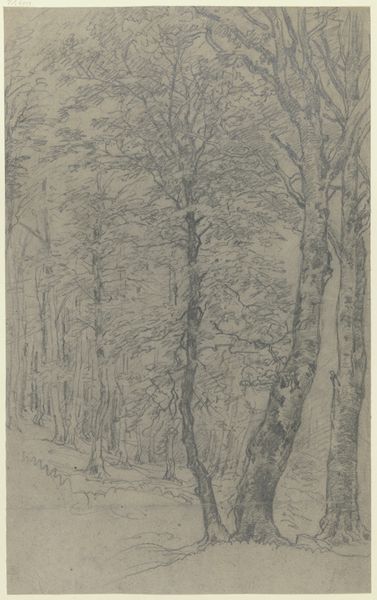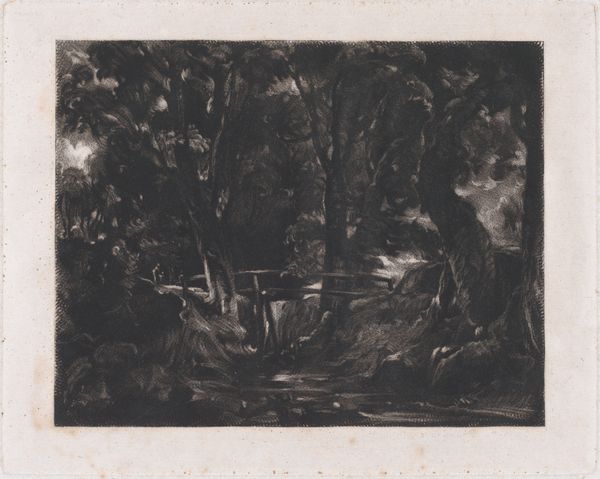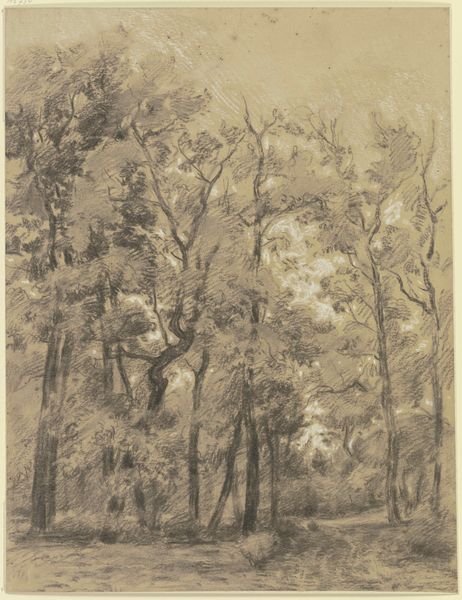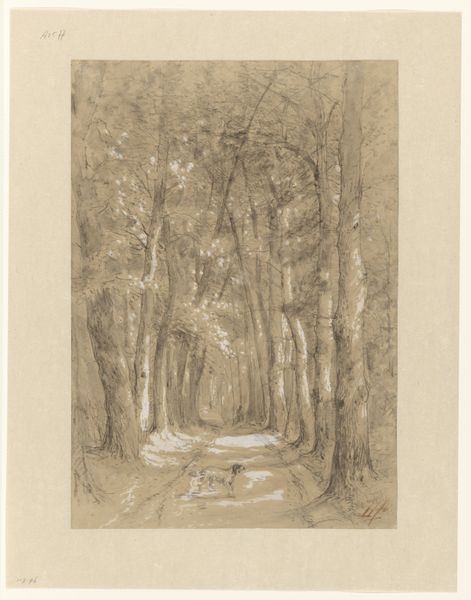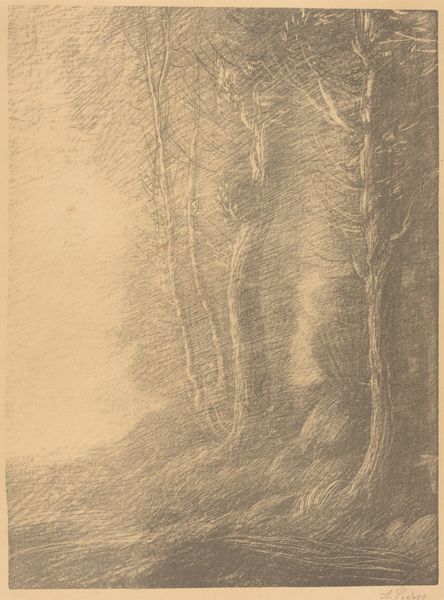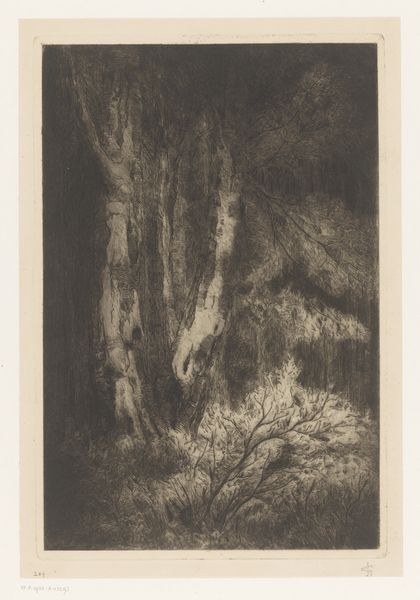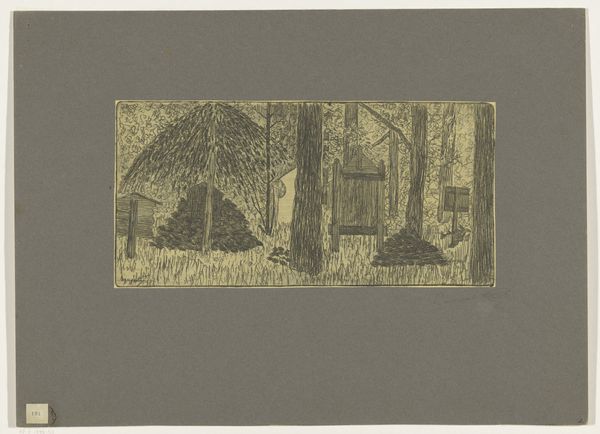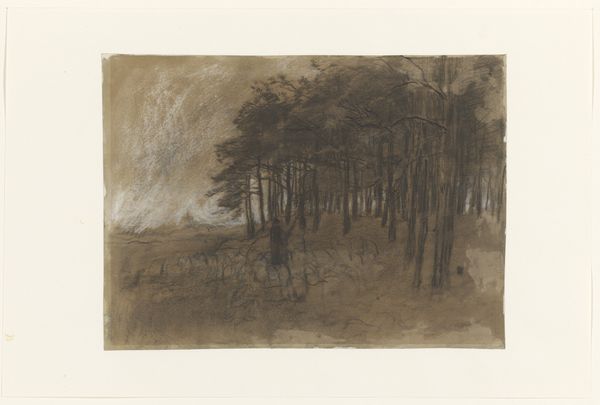
drawing, paper, chalk, pastel
#
drawing
#
landscape
#
paper
#
expressionism
#
chalk
#
pastel
Copyright: Public Domain
Curator: Here we have Friedrich Mook's "Fir Trees," created in 1912. It resides here at the Städel Museum. Editor: My first thought is the density, that charcoal almost swallows you into the forest! The texture is fascinating; scratchy, immediate. You can almost feel the bite of the cold air. Curator: Indeed, and that speaks to the Expressionist movement Mook was associated with. This piece reflects the movement's interest in conveying inner emotion and raw experience rather than mere realistic depiction. Consider the socio-political anxiety brewing at the time; it’s palpable here. Editor: Exactly, and look at the materiality. The rapid application of chalk and pastel—we see the direct, unfiltered gesture of the artist. There’s no attempt to hide the process, quite the opposite! It embraces the inherent qualities of those media. How accessible would those materials be? Curator: It certainly removes any sense of academic detachment from the artistic process, democratizing both creation and viewership. He presents the German forest in a light more complex than nationalistic romanticism, which was the politically mainstream imagery. Editor: And it’s important to think about how the production of the drawing impacts its reception, isn't it? The choice of materials affects the perceived value, maybe. It’s a drawing on paper—inherently less ‘precious’ than, say, an oil painting, challenging high and low art. Curator: Yes, its public role is much different that of a commissioned portrait, which would only hang in a private home. Here, this is deliberately immediate, portable, and thus capable of wider cultural influence within exhibition circuits and art societies, impacting far more people. Editor: This piece, for me, serves as a powerful reminder of art’s ability to distill raw, unfiltered feeling through incredibly economical means, really stripping down the means to the basics and still packing a heavy, emotional punch. Curator: And, understanding Mook’s social context truly does enhance how we might see and understand his choices in those materials and that directness. The forest transforms into a mirror of a changing world, where social, political and even industrial forces shape our views, experiences, and materials.
Comments
No comments
Be the first to comment and join the conversation on the ultimate creative platform.
